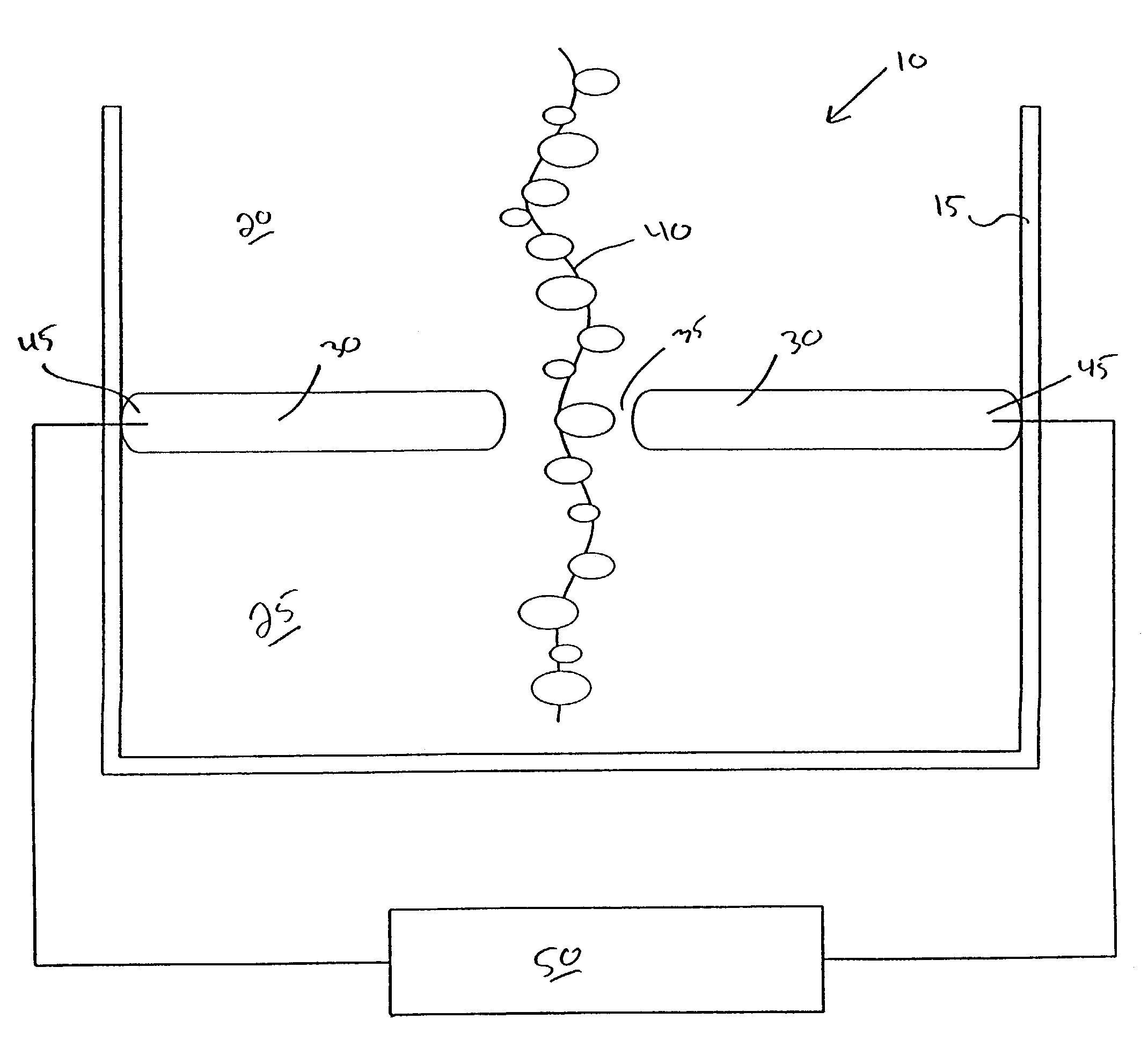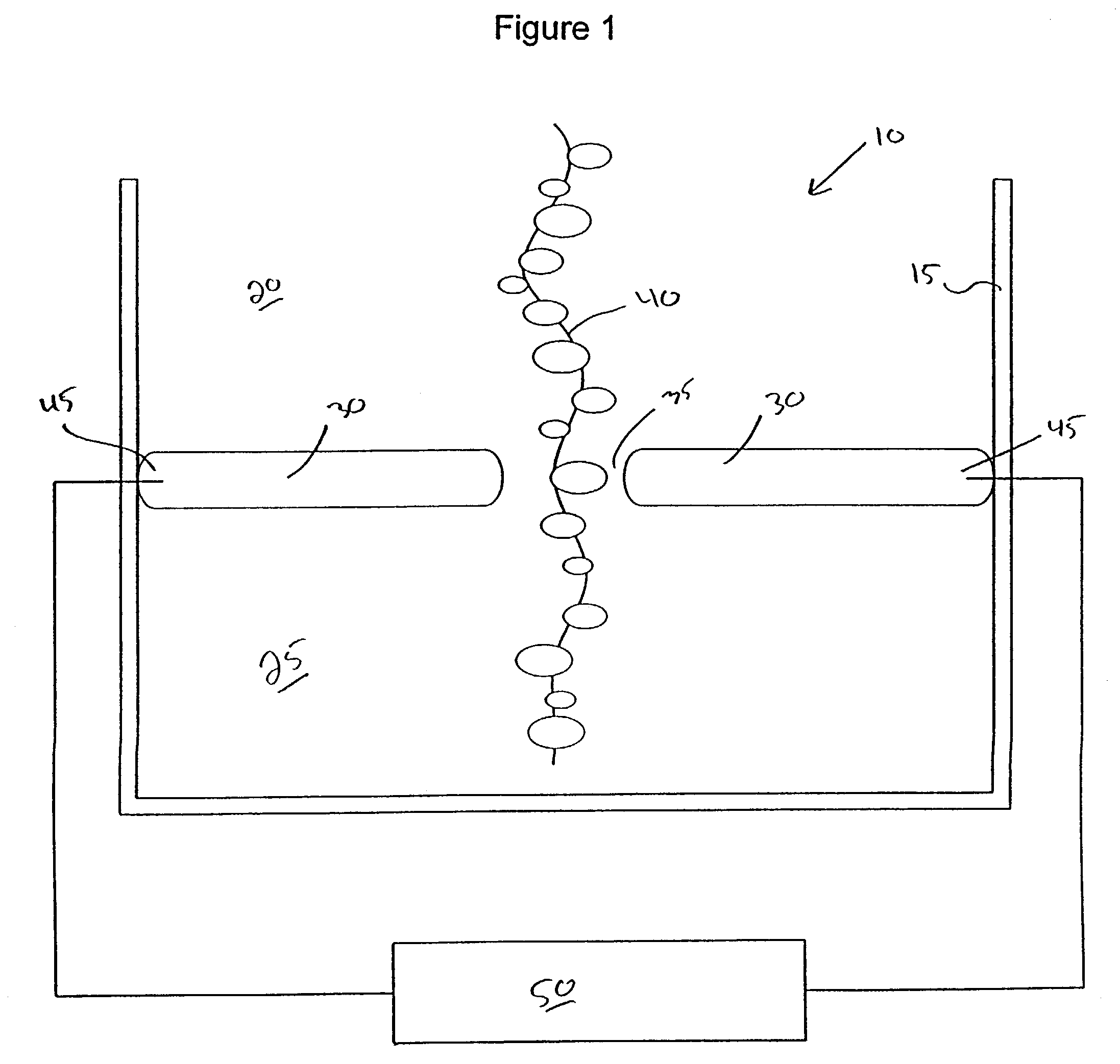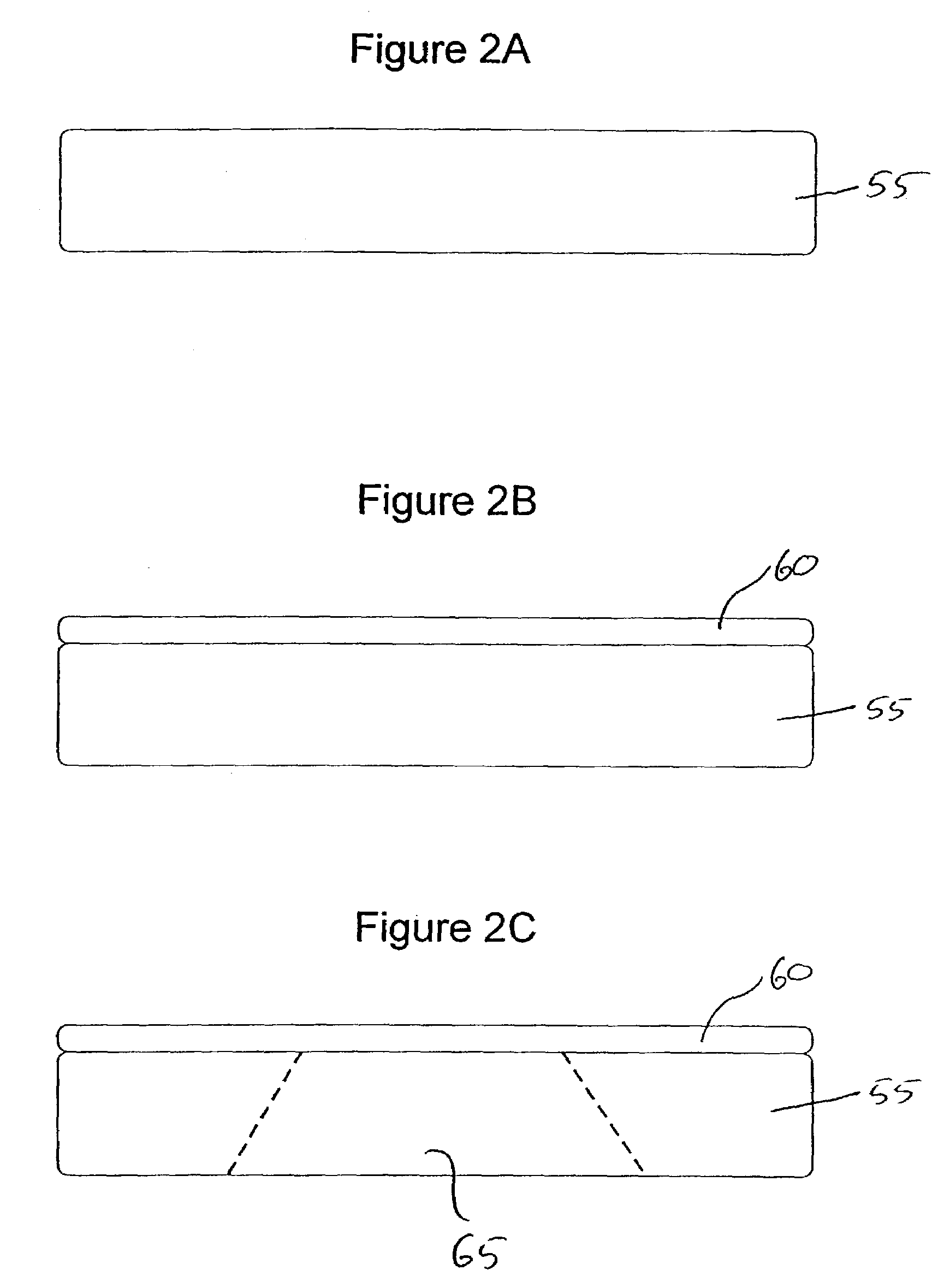Solid state membrane channel device for the measurement and characterization of atomic and molecular sized samples
a solid-state membrane channel and sample technology, applied in the field of polymer molecule characterization devices, can solve the problems of tedious and laborious work, high cost of desired characterization of a particular polymer sequence, and large time and effort required to complete, and achieve repeatable and highly accurate devices, facilitate longitudinal measurements, and precise conductive layers
- Summary
- Abstract
- Description
- Claims
- Application Information
AI Technical Summary
Benefits of technology
Problems solved by technology
Method used
Image
Examples
Embodiment Construction
[0035]Referring to FIG. 1, a channel device is illustrated and generally referred to as 10. Channel device 10 includes container 15 within which resides a volume of fluid. The fluid is separated into an upper pool 20 and lower pool 25 by a membrane 30. The liquid within upper pool 20 and lower pool 25 is preferably a conductive solution and contains a number of linear polymer molecules 40. Polymer molecules 40 are free to travel through the liquid medium contained within container 15. FIG. 1 is provided for illustrative purposes only and the components shown are not drawn to scale in general or with respect to each other.
[0036]By using various processes, such as introducing a voltage differential across membrane 30, polymer molecules 40 can be directed through channel 35 in membrane 30. Channel 35 is a nano-scale aperture. Typically, channel 35 will have a diameter of up to about 10 nm and preferably between 2–4 nm. Of course, the actual size will be selected to best serve the desir...
PUM
| Property | Measurement | Unit |
|---|---|---|
| diameter | aaaaa | aaaaa |
| thickness | aaaaa | aaaaa |
| diameter | aaaaa | aaaaa |
Abstract
Description
Claims
Application Information
 Login to View More
Login to View More - R&D
- Intellectual Property
- Life Sciences
- Materials
- Tech Scout
- Unparalleled Data Quality
- Higher Quality Content
- 60% Fewer Hallucinations
Browse by: Latest US Patents, China's latest patents, Technical Efficacy Thesaurus, Application Domain, Technology Topic, Popular Technical Reports.
© 2025 PatSnap. All rights reserved.Legal|Privacy policy|Modern Slavery Act Transparency Statement|Sitemap|About US| Contact US: help@patsnap.com



